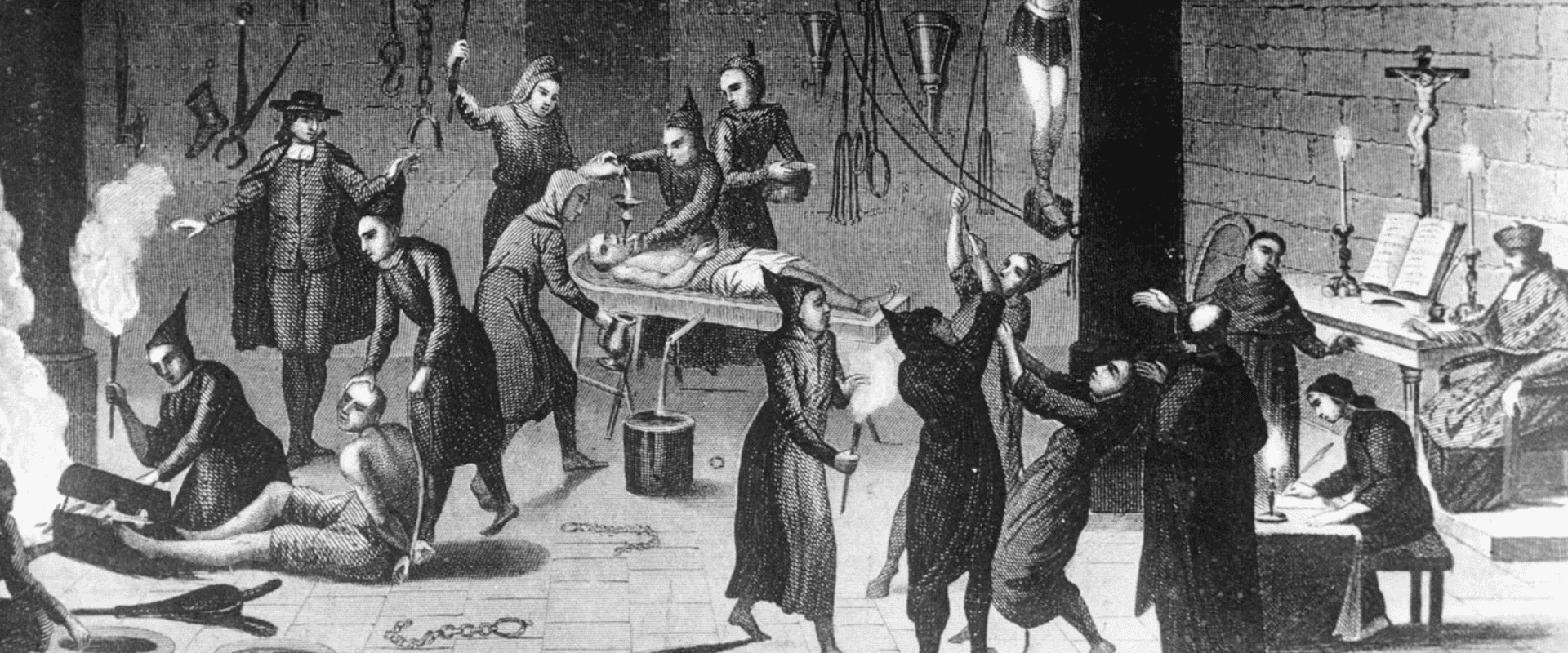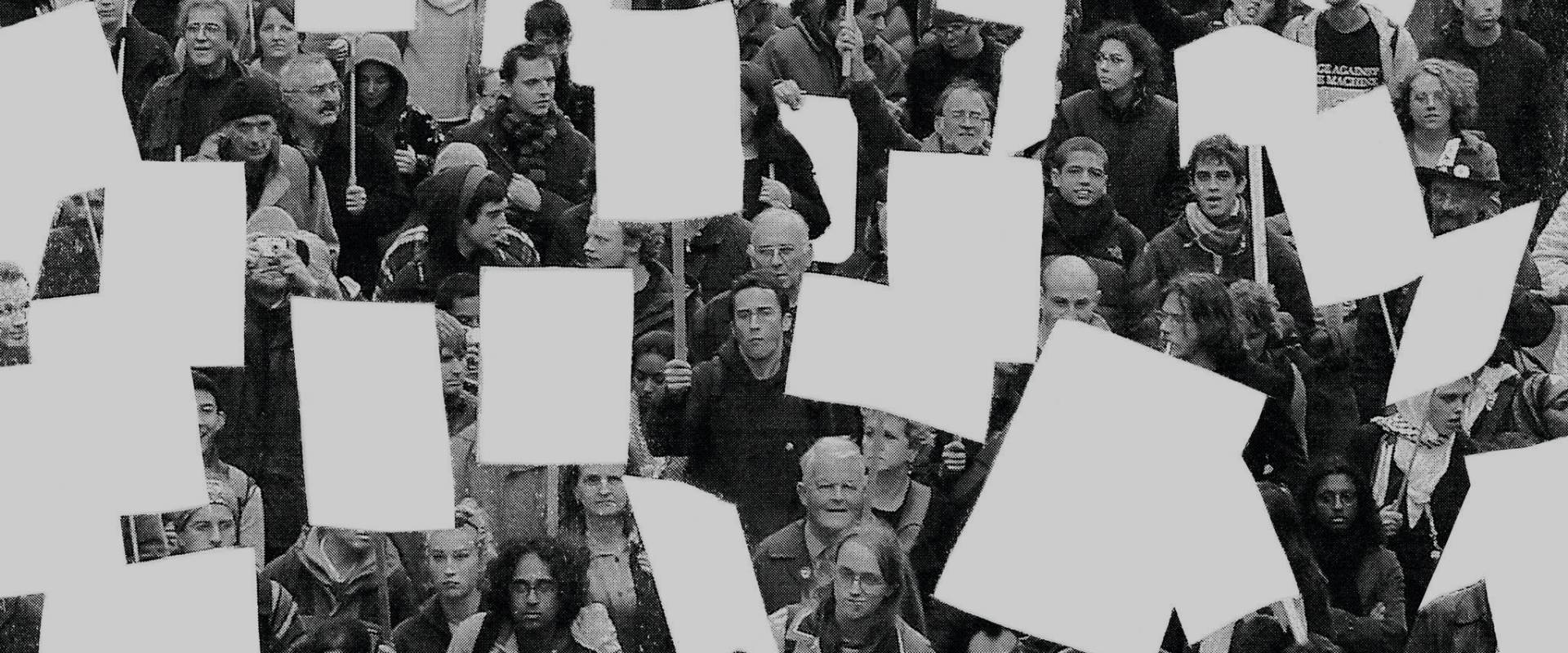In the 1930s, the Soviet Union was wracked by intense violence known as the Great Terror or the Great Purge. During this time, Soviet leader Joseph Stalin initiated a series of public show trials to eliminate his political competition within the Communist Party.
Under threat of execution, leading Bolsheviks confessed that they were guilty of sabotage, assassination, wrecking, and espionage in league with fascists and the exiled Leon Trotsky to restore capitalism in the Soviet Union. Within the world communist movement aligned with the USSR, these verdicts were accepted as unquestioned articles of faith. Only small groups of dissident Marxists dared to protest.
After Nikita Khrushchev’s “secret speech” denouncing Stalin’s crimes in 1956, and especially after the opening of the Soviet archives in 1991, the old narrative about the trials has largely been discredited. Still, there are those who believe in the old-time religion of the General Secretary.
Amongst the most zealous defenders of the Stalinist liturgy is Grover Furr, a professor of medieval literature at Montclair State University. Over the past several decades, Furr has produced dozens of articles and books claiming that the Soviet courts got it right — that there was a vast “Trotskyite–Fascist” plot to destroy the USSR. Amongst many contemporary “Marxist-Leninists” (Stalinists), Furr is viewed as a leading authority who has exposed lies, falsehoods, and unsubstantiated claims that characterize the study of the Stalin-era Soviet Union.
However, a closer examination of Furr’s work reveals that, as always, he justifies Stalin’s inquisition with crude falsehoods, cherrypicked data, conspiracism, and logical fallacies.
The case of the vanishing Trotskyite–Fascist conspiracy
Furr’s latest book is Trotsky’s Comintern Conspiracy — The Case of Osip Pyatnitsky. Co-authored with Vladimir Bobrov, this volume focuses on the old Bolshevik and important Comintern official Pyatnitsky (1882–1938). According to Furr, Pyatnitsky conspired with Leon Trotsky and other Bolsheviks to carry out multiple crimes: espionage with the Third Reich, planning the assassination of Soviet leaders, wrecking the Soviet economy, organizing an armed uprising to coincide with a fascist invasion, and sending Comintern funds to Trotsky.
As Furr and Bobrov claim, “The truth — obvious to anyone who studies the primary sources in a spirit of objectivity — is that these serious conspiracies did indeed exist. We have an enormous amount of evidence from former Soviet archives to prove it.”
For Furr, the lack of proof becomes the best proof possible, with which we can prove the existence of Santa Claus and angels alongside a “Trotskyite–Fascist” conspiracy.
Yet Furr cannot substantiate these fantastic charges with physical evidence from the Soviet archives or anywhere else. As he readily admits: “No documentary evidence of collusion with Soviet conspirators, including Leon Trotsky, has been found in the prewar archives of Germany and Japan.”
Yet this does not deter Furr, since he argues that the lack of physical evidence and documentation merely proves how effective the “Trotskyite–Fascist” conspiracy was in covering their tracks: “All vital information would exist only in the minds of the participants. In fact, if such incriminating documents were found, the mere fact of its existence ought to raise suspicion of fakery!”
Knowing that he has no certainties, nor a “smoking gun,” Furr states that there is no such thing as conclusive proof since any evidence can be forged or faked, making it unreliable: “As always in the writing of history our conclusions must be provisional. Historians do not deal in ‘certainties.’ As more evidence comes to light in [the] future, we must be prepared to adjust or even discard our earlier conclusions.”
Furr’s superficial agnosticism merely distracts from the main issue. He has made specific claims that there was a vast conspiracy composed of Pyatnitsky, Trotsky, and Adolf Hitler that was exposed, and that their key ringleaders in the USSR were executed.
If foreign powers were funding a “Fascist–Trotskyite” conspiracy, then what would the paper trail realistically look like? Did the conspirators hold their own conferences? Did they have orders? Did anyone write their memoirs? Where are the receipts listing the funds they received to conduct espionage, assassination, and wrecking? No physical proof was provided in the Soviet courts that allegedly verified this vast conspiracy. Nor was anything uncovered in the archives of Germany and Japan. The German authorities were noted for meticulous record keeping, so it is reasonable to assume they would have left proof in the archives. In that case, why didn’t Soviet researchers find any after occupying Germany in 1945?
For Furr, the lack of proof becomes the best proof possible, with which we can prove the existence of Santa Claus and angels alongside a “Trotskyite–Fascist” conspiracy.
Inquisition logic
That means the only evidence available to Furr are confessions. In fact, close to half the book is composed of lengthy transcripts of interrogations and confessions from Soviet police archives. He believes that Pyatnitsky freely confessed his guilt and that no torture or physical coercion was employed by the NKVD, the Soviet secret police, to produce false testimony. Furr says that evidence obtained from torture was inadmissible in Soviet courts: “In a judicial procedure, even in the USSR during Stalin’s time, evidence obtained from a defendant by torture was invalid and could not be validly used.”
This contradicts the evidence we possess from the Soviet archives. The collection Road to Terror, edited by J. Arch Getty and Oleg V. Naumov and first published in 1999, provides ample details. For example, the NKVD authorized quotas for mass arrests in July 1937. This was part of an official police campaign in which thousands were arrested in an atmosphere of mass hysteria and false denunciations. The suspects had good reason to believe they would not be handled gently by the police.
Furr’s reasoning has more in common with the rationales used to justify the Inquisition’s auto-da-fé or the Salem Witch Trials of 1692.
There were also operational orders for interrogating subjects that included solitary confinement, beatings, and torture. There are further documents with detailed instructions on the punishment and surveillance of families of suspects. Top Soviet leaders such as Vyacheslav Molotov were aware that torture was widely practiced and that innocent people were sentenced to death. While it was true that the defendants at the Moscow Trials were not physically tortured — this would have made the frame-up too obvious — they were still under threat. They lived in a society where torture of suspects was pervasive and families were threatened.
At the same time, Furr claims that even if torture was applied during interrogations that this does not mean those confessions should be considered any less reliable than those for which no physical pressure was applied. He writes in all seriousness, “The fact that a person was beaten is not evidence that he was innocent. Guilty persons can also be beaten.”
Despite Furr’s claims, documentary proof of frame-ups does cast suspicion on confessions. In the United States, confessions obtained by coercion are routinely thrown out by the courts upon further appeal. Proof of coercion does cast doubt on the whole justice system whether in the United States or the Soviet Union.
This raises another issue about the confessions: their lack of corroborating evidence. For instance, the confession of a suspect to multiple murders is only valid if they can show where the bodies are buried. The claims of the confession are only confirmed by discovering other corroborating evidence.
In both the Moscow Trials and Furr’s work, no form of corroborating evidence is provided at all. The existence of confessions without corroborating evidence raises the immediate question as to whether the accused were coerced in one way or another to incriminate themselves.
As Nikolai Bukharin said at his 1938 trial: “The confession of the accused is not essential. The confession of the accused is a medieval principle of jurisprudence.” In other words, Furr’s reasoning has more in common with the rationales used to justify the Inquisition’s auto-da-fé or the Salem Witch Trials of 1692.
In addition, Furr states that no frame-up was involved because Stalin sincerely believed there was a conspiracy: “Stalin accepted these [NKVD] reports as genuine. Stalin believed that he was taking decisive action against anti-Soviet conspiracies that did indeed pose a serious security threat to the USSR. The evidence available to us today proves that Stalin was correct.” This is the reasoning of George Costanza from Seinfeld: “Jerry, just remember, it’s not a lie if you believe it.”
Just because Stalin believed something did not make it true. People sincerely believe in miracles, horoscopes, and the claims made on Fox News, but that does not make any of them true. Believing in absurdities does not mean one cannot commit crimes or justify frame-ups.
Conspiracies within conspiracies
At the same time, Furr states that NKVD chief Nikolai Yezhov was deceiving Stalin and the Soviet leadership with his reports: “We know a great deal about how Yezhov and his men beat false confessions and executed a great many — probably tens of thousands of innocent persons.”
To recap: on the one hand, Furr says that confessions obtained by the NKVD proved that a “Trotskyite–Fascist” conspiracy was real. On the other hand, he acknowledges that the Soviet security forces under Yezhov engaged in the widespread torture of innocent people.
Blaming Yezhov for repression in the 1930s enables Furr to absolve Stalin and still defend the Moscow Trials narrative. He claims that from 1936–38, Yezhov carried out mass arrests and conducted torture to obtain false confessions. This was all done at the behest of the “Trotskyite–Fascist” conspiracy to discredit Stalin and the Soviet government: “In the interrogations we have cited above Yezhov also confessed to torturing and framing innocent persons on an enormous scale in order to sow discontent with the Soviet system and thus facilitate the overthrow of the Soviet government and Party leadership in the event of invasion by Japan and/or Germany.”
Furr states that no frame-up was involved because Stalin sincerely believed there was a conspiracy. This is the reasoning of George Costanza from Seinfeld: “Jerry, just remember, it’s not a lie if you believe it.”
If one accepts Furr’s reasoning, then at the high point of the Great Terror, the NKVD was carrying out extensive repression. Somehow, the false confessions obtained did not include Pyatnitsky and the defendants at the Moscow Trials. This raises a number of obvious questions. Was Yezhov hiding his cover by unmasking genuine conspiracies? Wouldn’t it defeat the purpose of the “Trotskyite–Fascist” plot for Yezhov to arrest his co-conspirators? If Bukharin and others were betrayed by Yezhov, then why didn’t they identify him as a co-conspirator?
Furr’s effort to reconcile Yezhov versus Stalin with the narrative of the Moscow Trials has no basis in historical fact. Rather, this resembles medieval astronomers attempting to salvage the Ptolemaic theory that the Earth was the center of the universe even as contrary evidence kept piling up. Eventually, it had to be abandoned for a theory that better fit the data.
Furr’s attempt to construct conspiracies within conspiracies is built on faulty premises and internal inconsistencies. In the end, his entire narrative of Soviet history cannot be squared with reality.
Sloppy Stalinist pseudoscience
It is worth noting that, as with all of his work, Furr’s book is poorly organized and difficult to follow. Even the index is sloppy, with subjects listed by their first name instead of their last, making it hard to find anything. The first 80 pages — we forgive those who stop reading by this point — does not lay out the main argument of the text. In the opening chapters, Furr discusses a series of historical articles about Pyatnitsky and inundates the reader with an abundance of data.
The structure of the book clearly shows Furr’s pseudo-scholarly method. He does not present a thesis or an abstract, listing his main points and the evidence to support his claims. Since Furr has no coherent evidence at all, he strains to make a case that cannot be made. Instead, he bombards the reader with small facts, stories, and documents for nearly a quarter of the book. He “proves” all sorts of things and takes the reader down many different rabbit holes.
Unfortunately, Furr’s approach works with “Marxist-Leninists” who want to believe a false narrative and prefer to live in a bubble where their faith isn’t challenged.
However, the mountain of data does not prove his central argument that Pyatnitsky was involved in a vast conspiracy. Furr’s work is a classic example of pseudoscience. It has the form, language, tone, and footnotes that give the appearance of scholarly rigor. All this serves as filler to overwhelm the reader with seemingly abundant evidence to make them more predisposed to accept Furr’s arguments. Since Furr can’t impress the reader with brilliance, he baffles them with bullshit.
In his approach, Furr is little different from those who attempt to prove 9/11 conspiracy theories, the existence of the Illuminati, or that Jews control the world. Like all pseudoscience, Trotsky’s Comintern Conspiracy is written to deceive.
Unfortunately, Furr’s approach works with “Marxist-Leninists” who want to believe a false narrative and prefer to live in a bubble where their faith isn’t challenged. For those interested in a critical analysis of Stalinism, I encourage readers to explore my Stalinism and the Dialectics of Saturn and my forthcoming work, The Prophet Persecuted, which will discuss the conspiracist thinking of Furr and other neo-Stalinists regarding the Moscow Trials.
Yet this does not mean that Furr’s work is completely valueless. Understanding those who, like Furr, get it completely wrong is useful training in critical thinking. It enables one to distinguish a scientific approach to reality from one more akin to the irrationalist and conspiracist methods of creationists, Holocaust deniers, and QAnon. Woe to those leftists who cannot tell the difference.



